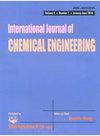Ghanaian Clay as a Catalyst for Transesterificating Shea Butter Oil as Alternative Feedstock for Green Energy Production
IF 2.3
4区 工程技术
Q3 ENGINEERING, CHEMICAL
引用次数: 1
Abstract
In this study, catalytic transesterification of Shea butter oil with methanol to biodiesel was carried out. The clay particle was first sieved with a 250 ml sieve and then calcined at 800μC for 8 hours in a furnace. The calcined clay was then modified with 5% each of Zn(NO3)2 and SnCl2 separately for 3 h at 60°C using incipient wetness impregnation method. The slurry compositions were then dried at 120°C overnight in an oven. The modified clay catalysts were subsequently calcined for 3 hours at 600°C. The clay that had been modified with SnO2 and ZnO was assigned SD and ZD, respectively, whereas the clay that had not been doped (control) was assigned as AC. The catalysts were characterized using X-ray Diffractometer (XRD), Brunauer Emmett Teller (BET) surface area, and Scanning Electron Microscopy (SEM). Biodiesel was then produced from each of the catalysts under varying conditions of methanol to oil molar ratio, catalyst concentration, reaction temperature, and reaction time. When compared the performances of the catalysts (activated clay modified with SnO2, ZnO, and the control), activated clay modified with SnO2 resulted in an optimal conversion yield of 99.8% under 8 : 1 methanol to oil molar ratio, 1% catalyst concentration, 60°C of reaction time in 60 minutes. The catalytic performance was affected by the basicity and surface area of the catalysts. The biodiesel produced was comparable to American and European Union standards.作为绿色能源生产替代原料的乳木果油酯交换催化剂的加纳粘土
研究了牛油果油与甲醇催化酯交换制备生物柴油。首先用250 ml筛,然后在800μC下在炉中煅烧8小时。然后分别用5%的Zn(NO3)2和SnCl2对煅烧的粘土进行改性3 h,使用初湿浸渍法在60°C下浸渍。然后将浆料组合物在120°C下在烘箱中干燥过夜。随后将改性的粘土催化剂在600°C下煅烧3小时。用SnO2和ZnO改性的粘土分别命名为SD和ZD,而未掺杂的粘土(对照)命名为AC。使用X射线衍射仪(XRD)、Brunauer-Emmett-Teller(BET)表面积和扫描电子显微镜(SEM)对催化剂进行表征。然后在甲醇与油摩尔比、催化剂浓度、反应温度和反应时间的不同条件下,由每种催化剂制备生物柴油。当比较催化剂(用SnO2、ZnO改性的活性粘土和对照)的性能时,用SnO2改性的活化粘土在8 : 1甲醇与油的摩尔比,1%的催化剂浓度,60°C的反应时间为60分钟。催化剂的碱度和表面积对其催化性能有影响。生产的生物柴油与美国和欧盟的标准相当。
本文章由计算机程序翻译,如有差异,请以英文原文为准。
求助全文
约1分钟内获得全文
求助全文
来源期刊

International Journal of Chemical Engineering
Chemical Engineering-General Chemical Engineering
CiteScore
4.00
自引率
3.70%
发文量
95
审稿时长
14 weeks
期刊介绍:
International Journal of Chemical Engineering publishes papers on technologies for the production, processing, transportation, and use of chemicals on a large scale. Studies typically relate to processes within chemical and energy industries, especially for production of food, pharmaceuticals, fuels, and chemical feedstocks. Topics of investigation cover plant design and operation, process design and analysis, control and reaction engineering, as well as hazard mitigation and safety measures.
As well as original research, International Journal of Chemical Engineering also publishes focused review articles that examine the state of the art, identify emerging trends, and suggest future directions for developing fields.
 求助内容:
求助内容: 应助结果提醒方式:
应助结果提醒方式:


